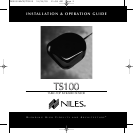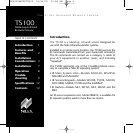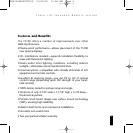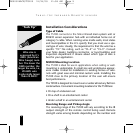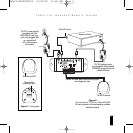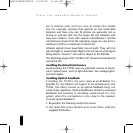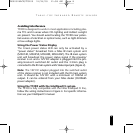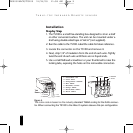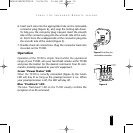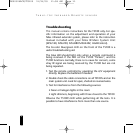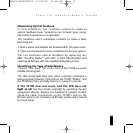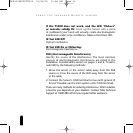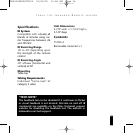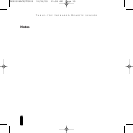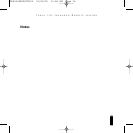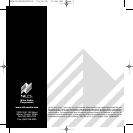
5
T
ABLE
-
TOP
I
NFRARED
R
EMOTE SENSOR
size of batteries used, and how many IR emitters the remote
has. For example, remotes that operate on two small AAA
batteries and have only one IR emitter are generally not as
strong as remotes that use the larger AA size batteries and
have two emitters. Tests with various manufacturers
’
remote
controls have shown that the operating range can vary from a
minimum of 20' to a maximum of about 30'.
Infrared signals travel essentially line-of-sight. They will not
pass through or around solid objects. Do not rely on an IR signal
being able to “bounce” off a wall or object to the MS100.
The IR pickup angle of the TS100 is 30° off-axis (horizontal and
vertical) at 20'.
Avoiding Electrical Interference
Avoid locating the TS100 near any potential sources of electri-
cal or optical noise, such as light dimmers, low-voltage lights,
and neon lights.
Avoiding Optical Feedback
If installing the TS100 in the same room as an IR flasher, it is
possible for the flasher’s IR output to be picked-up by the
TS100. This effect, known as an optical feedback loop, can
cause erratic operation. Optical feedback is similar to acoustical
feedback: the howling or whistling sound heard in a P.A.
system when the microphone is too close to the speaker.
To avoid optical feedback:
1. Re-position the flasher(s) and/or the sensor.
2. Use Niles MF series flashers and cover them with the
supplied IR blockers.
DS00326ACN/TS100 11/26/03 11:58 AM Page 7



